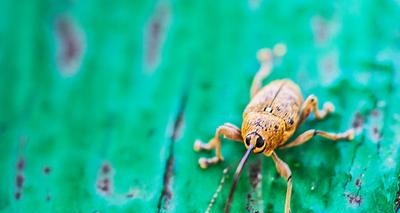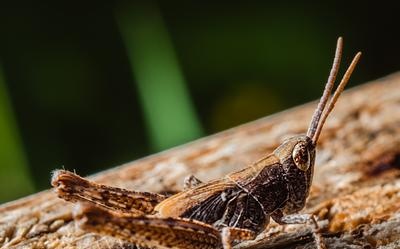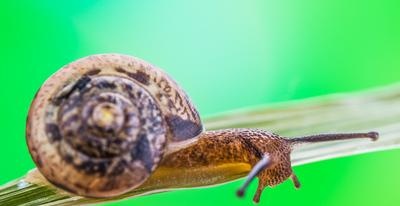|
 In the spring, among the strong green shoots, stunted plants with reddish leaves, weak drooping buds, covered with a gray down are often striking. This is a dangerous disease - gray rot (botrytis). In the spring, among the strong green shoots, stunted plants with reddish leaves, weak drooping buds, covered with a gray down are often striking. This is a dangerous disease - gray rot (botrytis).
It especially strikes flowers in a rainy summer. You can save plants from gray rot if you feed them with phosphorus-potassium fertilizer, loosen the soil more often, do not overmoisten it. When the plants reach a height of 10 cm, you need to sprinkle them with a suspension of TMTD (200 g per 10 l of water) or a copper-soap solution. And before planting, gladiolus bulbs should be etched with potassium permanganate (5 g per 1 l of water) for 30 minutes or formalin (3 g per 1 l of water) for 15 minutes, you can also treat granosan (2 g per 1 l of water) for 30 min or with TMTD preparation (2 g per 1 l of water) for 15 min.
Another common disease of seedlings and cuttings is black leg. With this disease, the plant develops poorly, the leaves on it are small, wrinkled, the buds fall off without opening. The causative agent of the disease is a soil fungus, which can persist for several years in the upper soil layer. To prevent the appearance of a black leg, it is necessary to disinfect the soil with TMTD powder to a depth of 5 cm (50 g per 1 m2 of soil) before sowing. It is also recommended to grow seedlings in peat pots, pickle seeds with granosan (3-4 g per 1 kg of seeds), add sand to young plants with a layer of up to 2 cm, which enhances the formation of additional roots and reduces soil contamination. Infected plants must be immediately destroyed, and the soil must be watered with a 1% solution of potassium permanganate (6-7 liters per 1 m2).
Before sowing, aster seeds should be rendered harmless - pickle them for 5 minutes with potassium permanganate (1 g per 1 l of water) or granosan (2 g per 1 l of water). You can also pollinate the seeds with granosan (1 g per 250 g of seeds) or TMTD powder (2 g per 100 g of seeds, shaking for 5 minutes).
 15-20 days before planting seedlings of asters, levkoes, snapdragons, planting gladioli and dahlias, the soil is etched with formalin (1 m2 requires a glass of formalin diluted in 10 liters of water). After pickling, the earth is dug up. 15-20 days before planting seedlings of asters, levkoes, snapdragons, planting gladioli and dahlias, the soil is etched with formalin (1 m2 requires a glass of formalin diluted in 10 liters of water). After pickling, the earth is dug up.
Thrips, small elongated insects, cause great harm to flowers. They especially often affect gladioli. Tripe is a persistent pest, it does not die in winter, it affects the corms in storage. Therefore, when planted in the ground, infected tubers must be pollinated with hexachlorane (HCH). And in the open field, the plant is sprayed with theophos (10 g per Yul of water). Tsvetofos works well against thrips.
Gladioli bring many worries to flower growers. Their diseases are caused by various microscopic fungi, bacteria, viruses. These capricious flowers are sensitive to drought and excessive moisture.
Gladioli love light, drained soil. In the fall, it is better to bring humus into it, and not manure. In the spring, you should put phosphorus-potassium fertilizers. This will save the plants from getting sick.
Roses in early spring should be sprayed with 1% dinitroorthocresol, or 6% carbolineum, or finally 2% nitrophene to kill overwintered pathogens and rose pests.
In the spring, after removing the winter shelter from the roses, red-brown spots can be seen on their stems, darkening in the middle. They grow rapidly and cover the stem in a ring. This is an infectious burn caused by the coniatirium fungus. Most often it appears if you do not remove the shelter for a long time. To prevent the disease from spreading, the affected rose stems must be immediately cut and burned. It is necessary to collect all plant residues around the bush, dig up the soil with a turnover of the layer.The bushes should be sprayed with 0.5-1% DNOC, or nitrophene, or 3% ferrous sulfate, or 2% Bordeaux liquid.
Rust is a dangerous disease of roses. The stems affected by it must be cut out and burned, the soil around the bushes must be dug up several times in the summer, and the plant must be sprayed with pesticides (the same ones that are recommended for combating powdery mildew). Good results are obtained with garlic treatment (the affected areas are rubbed with garlic cloves). You cannot keep rosehip bushes near the rose: they are carriers of infection.
In the middle of summer, a white powdery coating appears on some flowers. The leaves curl up, dry out, the shoots die off prematurely, and often the whole plant also perishes. This disease is called powdery mildew. With the appearance of the first signs of the disease, it is necessary to systematically, 1-2 times a month, treat the plants with one of the following preparations: 1% colloidal sulfur (100 g of sulfur per 10 l of water), Bordeaux liquid, copper-soap solution (200 g of soap and 20 g copper sulfate per 10 liters of water) or soda and soap (40 g of soda ash and 40 g of soap per 10 liters of water), dust with sulfur.
Asters often die just before flowering. They have already picked up the buds, they are about to bloom and suddenly, without opening, they begin to fade. Dark spots appear on the roots and neck. Florists call this fusarium wilting. To protect flowers from it, follow these recommendations: do not plant the same plants in the same place for several years in a row; do not leave heavily thickened plantings; collect seeds only from healthy plants; burn all plant residues in the fall, as infection persists on them. 15-20 days before planting, the soil should be disinfected with formalin (250 cm3 per 10 l of water - per 1 m2), and after pickling, dig it up.
 The increased acidity of soils also contributes to premature wilting, therefore, two weeks before planting, lime (50 g per 1 m2) should be added to acidic soils. The increased acidity of soils also contributes to premature wilting, therefore, two weeks before planting, lime (50 g per 1 m2) should be added to acidic soils.
Sometimes variegated flowers appear among brightly colored one-color tulips. Many people mistake them for a variegated variety. In fact, this is a viral disease, which also affects peonies, phloxes, dahlias, etc. In this case, plants usually do not bloom, and if they give flowers, then they are deformed, slightly colored, with small mottled leaves. The carriers of viral diseases are mainly insects: aphids, thrips, ants.
The most common pest is aphid - a small sucking insect colored green, gray, brown, red. In plants from which the aphid has sucked the juices, curling of leaves, curvature of shoots, etc. are observed. It reproduces especially strongly in hot, dry summers, giving up to 15 generations per season.
As soon as aphids appear, the plant should be sprayed with nicotine sulfate or anabasine sulfate with soap (25 g of poison and 40 g of soap per 10 l of water), thiophos (10 g per 10 l of water). Spraying is carried out 3 times with an interval of 7-10 days.
To scare away aphids, a fragrant geranium with phytoncidal properties is placed among the plants on the windowsill. Tomatoes are planted in balcony boxes between ornamental plants, best of all Brazilian, du Barr variety. Plant leaves are washed with cold water at least once a week. A good effect is also given by dusting the infected leaves with tobacco powder.
Protecting against aphids, the plants are systematically washed with soapy water (4 g of soap per 1 liter of water). It is better to use green or good quality laundry soap.
It has an effective effect against the shield aphid, which often infects the leaves of ficus, philodendron, palm and other ornamental plants. garlic... The head of garlic must be crushed in a wooden mortar, poured over with water for a day, spray the plant with a strained solution, after removing the aphids from the leaves with a soft cloth.For this purpose, you can also use tobacco broth, which is prepared as follows: 40 g of tobacco from cigarettes are boiled in 1 liter of water for an hour. Then the broth is filtered and combined with 5 g of soap, previously diluted in 10 g of water. The whole plant is sprayed with the resulting solution or wiped with a soft cloth.
Sometimes on the leaves of roses, especially on the underside, small spiders appear - spider mites. In this case, the plant must be sprayed with thiophos (1 g per 1 l of water) or onion infusion (1 teaspoon of grated onion in a glass of water; insist for a day, then filter through cheesecloth). Spray 3-4 times in 7-10 days.
A good remedy against pests of indoor plants - ticks, whitefly aphids - is ordinary wood ash. All leaves and shoots are carefully sprinkled with it. For greater efficiency, a soap-ash suspension is used: 3-4 handfuls of ash are thoroughly stirred in a bucket of warm water, 2-3 tablespoons of washing powder or a little laundry soap are added there. The shaken suspension is sprayed on the plants from all sides from a spray bottle.
 To destroy aphids, leafhoppers, worms, scale insects, plants can be treated with Tsvetofos aerosol (2 g per 1 liter of cold water), sprinkled with an aqueous solution of karbofos (2 g per 1 liter of cold water). Against the scale insects, aphid eggs, copperheads, use KZM liquid (green soap concentrate) or KZ paste (liquid potassium soap). To destroy aphids, leafhoppers, worms, scale insects, plants can be treated with Tsvetofos aerosol (2 g per 1 liter of cold water), sprinkled with an aqueous solution of karbofos (2 g per 1 liter of cold water). Against the scale insects, aphid eggs, copperheads, use KZM liquid (green soap concentrate) or KZ paste (liquid potassium soap).
If there are worms in the flower pot, you need to put a rotten apple there, and all the worms will quickly crawl into it.
A dangerous pest of indoor plants is the root knot nematode. These are microscopic worms in the soil. In plants affected by it, swellings appear on the roots, similar to small beads, the leaves fade, lose their elasticity. The plant begins to starve and gradually dies.
Most often, the nematode appears on old plants, in which the ground has not changed for several years. To combat it, tagetes are sown in plant pots or its rooted stalk is planted. You can also do this: sow the seeds of tagetes in a separate pot, and when the seedlings grow 15 cm, cut off the shoots and root them in water. They give roots very quickly. To prevent tagetes from oppressing indoor plants, you need to pinch it, cut it, not let it grow.
On the balcony, tagetes or marigolds are also planted in boxes between plants. The presence of these plants inhibits root-knot nematode and promotes some soil health.
Actafiev V.I. - Advice on housekeeping
Read now
All recipes
|
 In the spring, among the strong green shoots, stunted plants with reddish leaves, weak drooping buds, covered with a gray down are often striking. This is a dangerous disease - gray rot (botrytis).
In the spring, among the strong green shoots, stunted plants with reddish leaves, weak drooping buds, covered with a gray down are often striking. This is a dangerous disease - gray rot (botrytis). 15-20 days before planting seedlings of asters, levkoes, snapdragons, planting gladioli and dahlias, the soil is etched with formalin (1 m2 requires a glass of formalin diluted in 10 liters of water). After pickling, the earth is dug up.
15-20 days before planting seedlings of asters, levkoes, snapdragons, planting gladioli and dahlias, the soil is etched with formalin (1 m2 requires a glass of formalin diluted in 10 liters of water). After pickling, the earth is dug up. The increased acidity of soils also contributes to premature wilting, therefore, two weeks before planting, lime (50 g per 1 m2) should be added to acidic soils.
The increased acidity of soils also contributes to premature wilting, therefore, two weeks before planting, lime (50 g per 1 m2) should be added to acidic soils.





